Okoro (1,259m) via the Artesiaga pass and Mount Erreguerena.
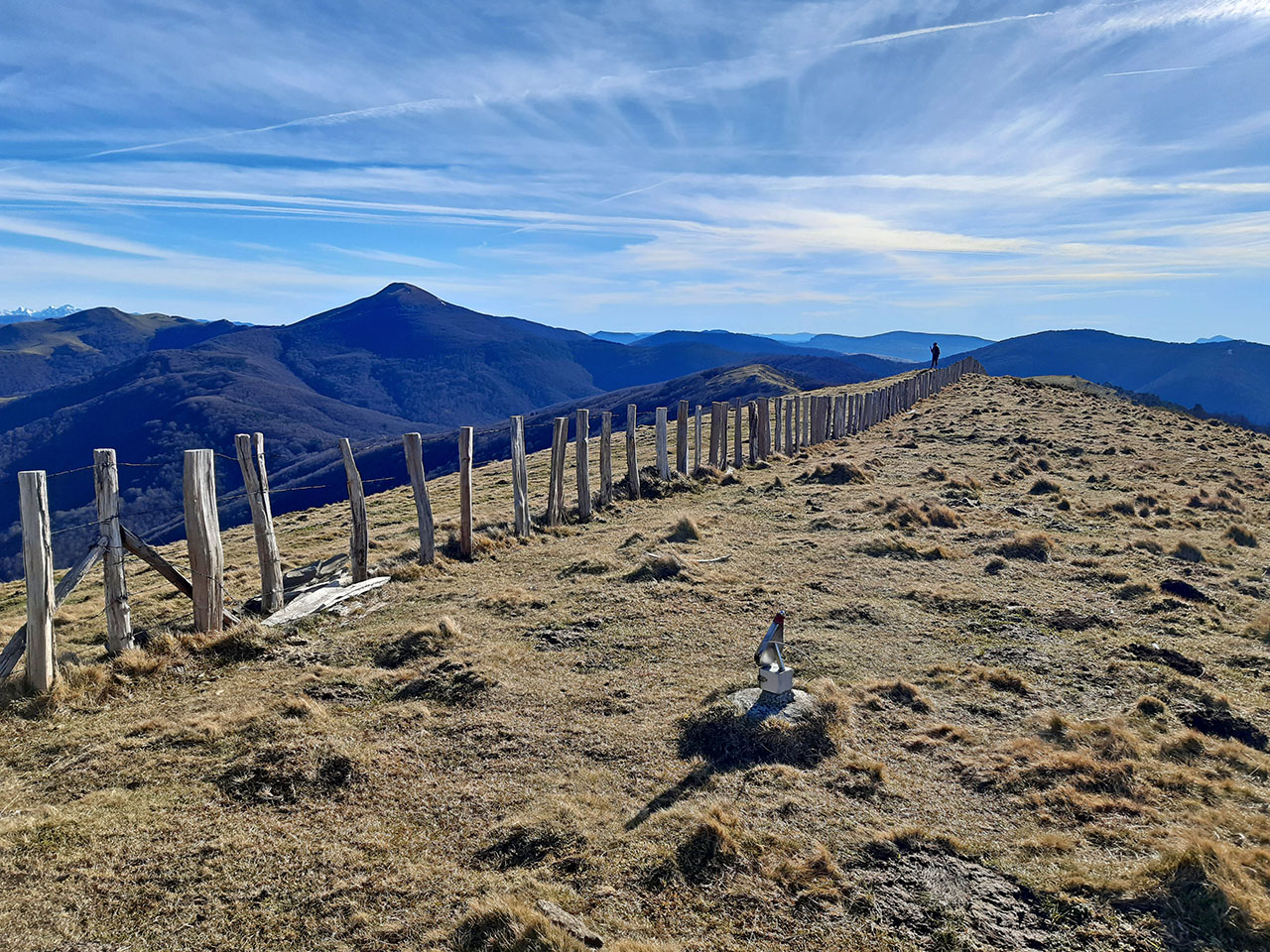
This week we are going on a route through the north of Navarre to climb up to the Okoro (1,259m)The highest peak of the mountain range that stretches between the Artesiaga and Urkiaga passes. A place of geographical importance where the Pyrenees decide between continuing towards Cape Higuer and plunging into the Cantabrian Sea, or continuing along the watershed and rising again in the Cantabrian Mountains.
The route we propose, starting from the vicinity of the Artesiaga pass, runs along the entire crest of the Cantabrian-Mediterranean watershed before ascending the Okoro. This is a very panoramic route, ideal on clear days or for ski mountaineering when there is snow, although the wind in winter can be infernal. For the descent, we will go into the heart of Mt. ErreguerenaWe descend through a vast beech forest, accompanied at the end by the Erdizaga stream.
Mount Erreguerena, a disputed territory.
The mountain Erreguerena is a Public Utility Mount of Navarre (MUP catalogued with the number 3) located in the Esteribar valleyIt is bordered to the west by the valley of Anue, to the north by the valley of Baztán and to the east by Quinto Real.
However, all of the 1,519 ha of surface area it occupies are included in the municipality of Esteribar, of which 557 ha belong to the Baztán Valley, while the rest is enjoyed in facería between the municipalities of Eugi and Baztán.
The history of this curious circumstance goes back a long way, when in 1775 the state bought the land from the Góngora entailed estate to supply wood to the Royal Munitions Factory of Eugi. However, as at that time the Baztan valley had the right to the use of grass and water from sunrise to sunset in this territory, there were frequent disagreements and disputes until 1919, when the state proceeded to redeem this easement giving full ownership to the Baztan valley of the famous 557 ha. mentioned above (but not to include them within its municipal boundaries, a dispute resolved in 2017 in favour of the valley of Esteribar by means of Foral Decree 4/2017).
Later, in 1987, the State transferred the 939 ha it still held to the Community of Navarre and in 1991, the latter ceded them free of charge to the town council of Baztán and the council of Eugi. Since then, its use has been communal, with a share of 90% for Baztán and 10% for Eugi (Esteribar valley).
For more information, please visit Wikipedia, Great Encyclopaedia of Navarre y Foral Decree 4/2017.
The Monte Alduide SAC
Practically all of Mount Erreguerena is included in the Monte Alduide Special Area of Conservation (Natura 2000 Network), also known as Quinto Real or Kintoa, in Basque, a toponym that refers to the old tax paid to Navarre for the right to acorn-feed "axeriçado" or foreign pigs by the French neighbours of Aldudes.
Among the main reasons that in 2005 led to its declaration as a special area of conservation within the Natura 2000 network, we can cite the following ones almost 6,000 hectares of beech forests that cover this territory, one of the most important masses in Navarre and which, together with the special conservation areas of Belate and Roncesvalles-Selva de Irati, forms a practically continuous space; its strategic situation in the transit of thousands of migratory birds between Europe and Africa through the western Atlantic flyway, this being a privileged place for observation and study; or the scattered presence of peatlandsThe ecosystem is of great environmental importance and has a unique biodiversity.
Route summary:
Starting at kilometre 18.7 of the NA-1740, at the confluence of the Erdizaga and Olazar races, we go up the Olazar race as far as the Artesiaga pass. From here we follow the ridge, (optionally) crowning each of the peaks that make it up: Larrakarte (1,186m), Zagua (1,159m), Astabizkar (1,128m), Iparraldeko kaskoa (1,199m), Artsal (1,230m) and Okoro (1,259m), the latter slightly off the ridge. The descent is cross-country until it connects with the path that leads down through the vast beech forest that covers Mount Erreguerena.
Map:
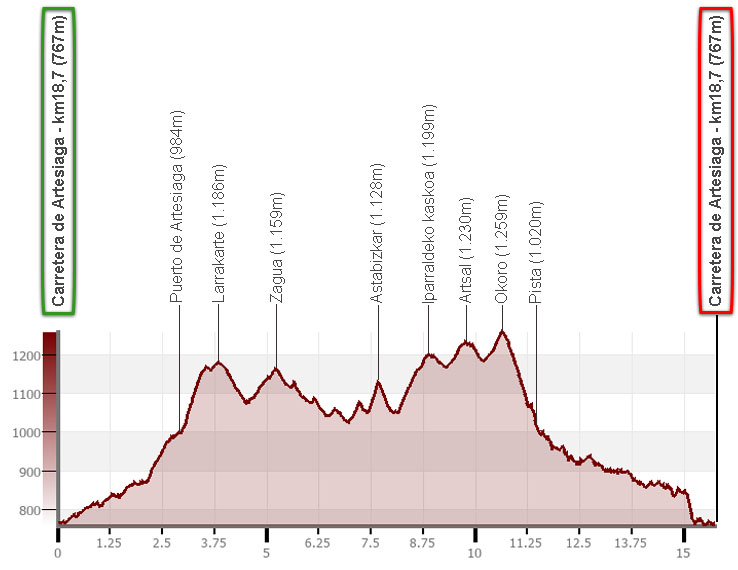
Downloadable:
How to get there:
See in Google Maps.
To get to the starting point of this excursion, kilometre point 18.7 of the NA-1740 (the road to the Artesiaga pass), our point of reference is the town of Irurita, if we are coming from the north, or Eugi, if we are coming from the south. From Irurita we will have to go up the whole of the Artesiaga pass and go down the other side for 2.5 km. From Eugi, continue to kilometre 11.6 on the NA-138, where you take the NA-1740 on the left towards Irurita. In total, 36 km from Pamplona. The car can be left at the entrance to a track where there is room for 4 or 5 cars.
Technical sheet:
Distance: 15.7km.
Cumulative difference in altitude: +/- 1.080m.
Timetable: about 5 and a half hours. Walking time without stops: 4h35min.
Water: there are no fountains along the route.
Difficulty: walking the mountain range in fog can be very confusing and, on windy days, criminal. If the weather is not good, following the GR12 markings without going over the peaks and carrying a GPS are safer options. The descent from the Okoro to the track is cross-country, with the added difficulty of having to jump over a wire fence.
Recommended equipment for the summer: boots or slippers, two walking sticks, GPS, canteen.
Itinerary:
(0h00min; 0,0km) Carretera de Artesiaga - Km18,7 (767m). Once we are at the entrance to the track next to the confluence of the Erdizaga and Olazar streams, we will start to walk up the road for almost a kilometre.
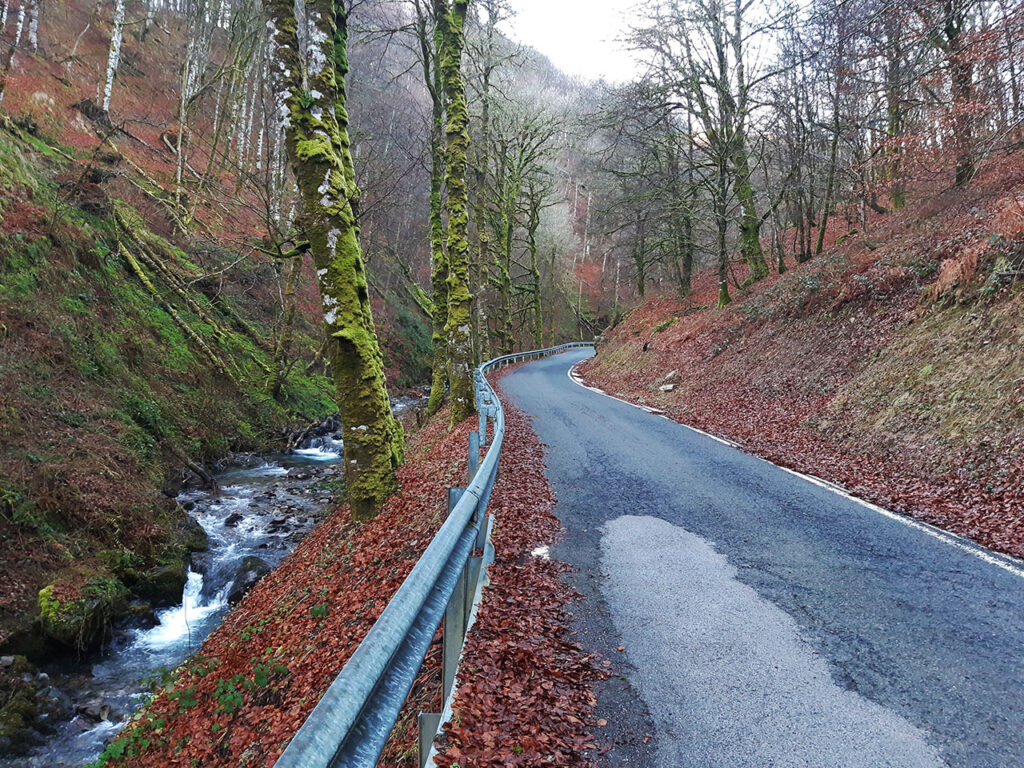
We leave it when we reach a horseshoe bend on the right hand side where, straight ahead, there is a path that runs alongside the river. It is a wide path, quite muddy in winter, which runs parallel to the Olazar stream through the beech forest.
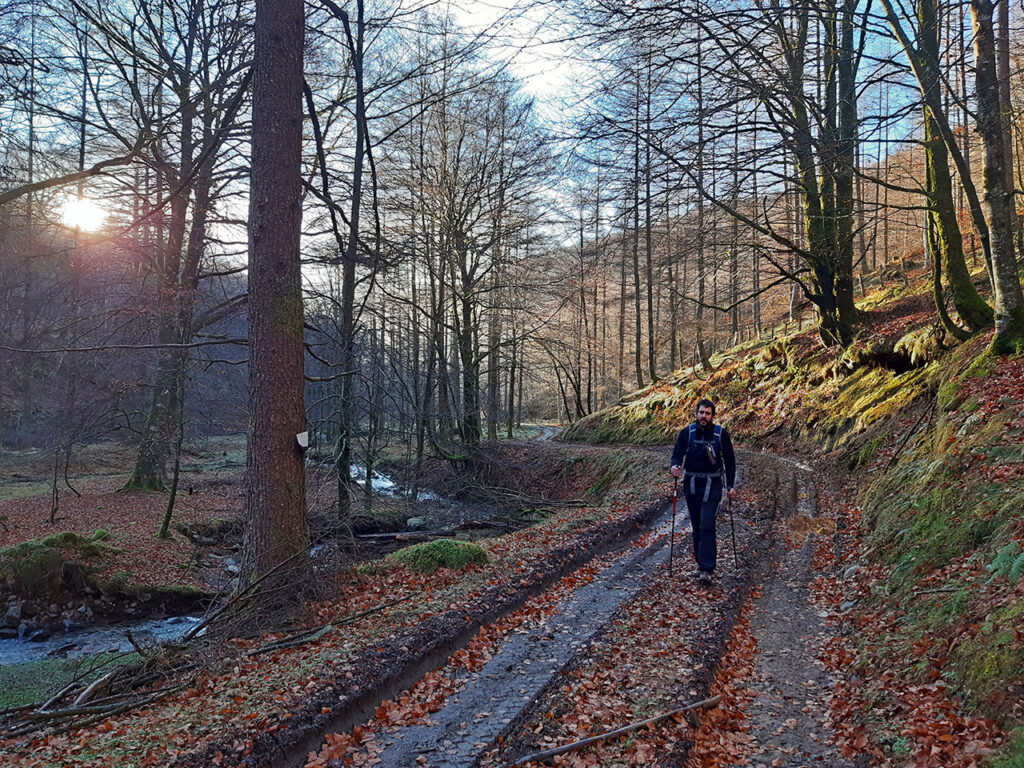
During the first kilometre, we will ascend gradually, but then the path steepens to gain the...
(0h40min; 2,8km) Artesiaga pass (984m). At the top of the pass there is plenty of space to park the car. It is a well-known place for hikers, as the GR12 (Euskal Herria Trail) passes through here and several mountain routes start here, such as the ascent to the Saioa.
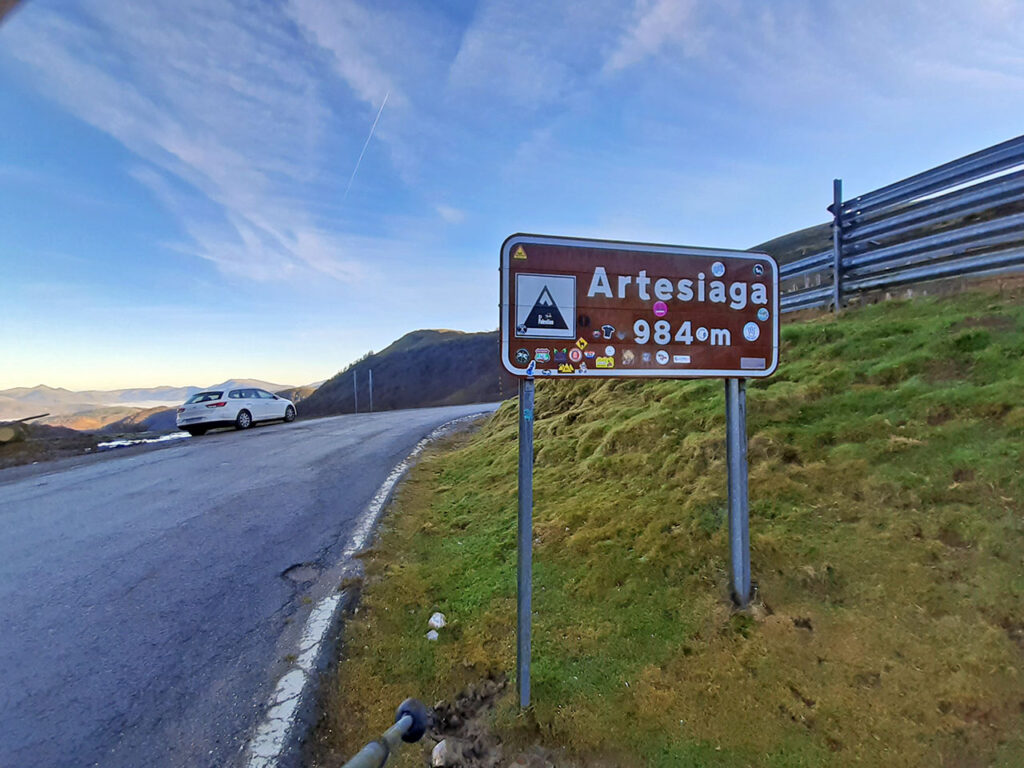
To the right of the road (east) we look out for the GR12 path and a wider, unmarked path. As from now on it is simply a matter of following the ridge, there are several options. The first and easiest is to follow the GR12 halfway up the slope, avoiding the peaks of Larrakarte and Zagua, to reach the crest of the ridge on a hill near Araongo Harria. The second consists of climbing Larrakarte following the wide path to the right, taking a small detour. The third one, the one that follows the track, consists of going up this path for about 250 metres to leave it at the first bend to the right and go up on clear terrain to the top of the hill.
(1h10min; 3,8km) Larrakarte (1.186m). Without a letterbox or any other type of human vestige, it is a magnificent vantage point from which you can practically see the whole of our route to the Okoro. A route that is easy to follow on a clear day, but can be really confusing when it is foggy.
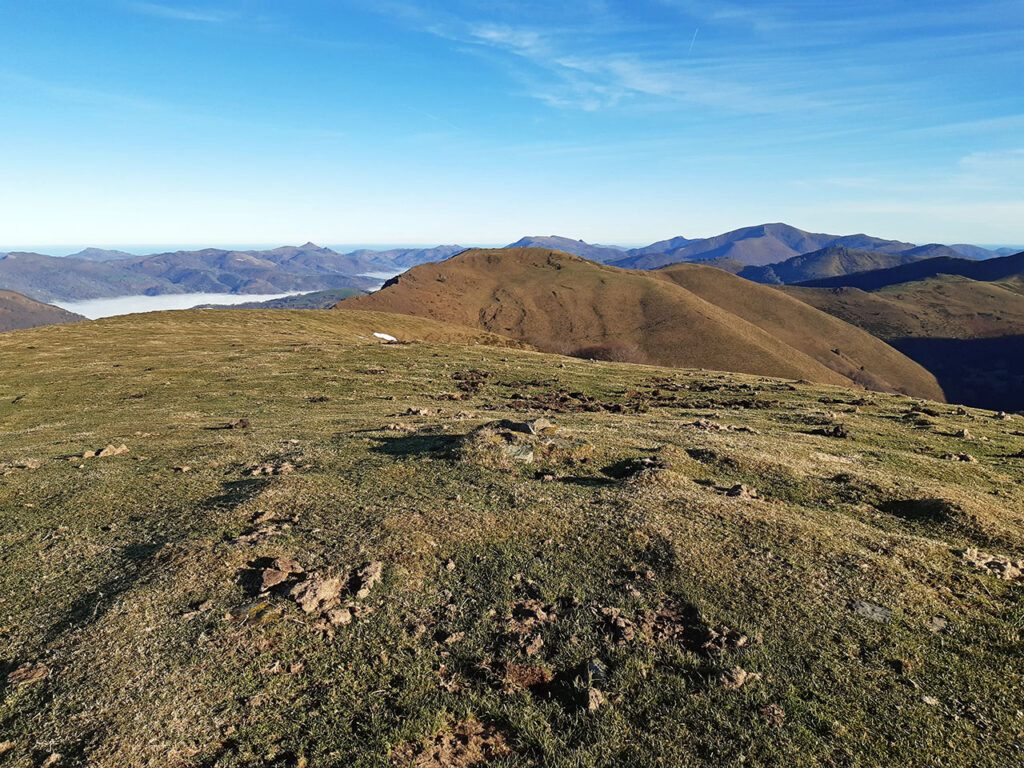
From here it is a matter of following the highest part of the route all the time, climbing or avoiding the different peaks that follow one after the other. The next one of the day is ...
(1h35min; 5,2km) Zagua (1.159m)We reach it after descending to the pass (1,075m) that separates them and then climbing up a wide, rocky ridge without difficulty. The next ridge, Araongo Harria (1,084m), where just before we come across the GR12, can be reached with little effort, as it hardly juts out. The first important one is...
(2h20min; 7,7km) Astabizkar (1.128m)We will face it head on through clear terrain after first passing the Gurutxemeaka (1,026m) and Konfesionario (1,050m) cols. From Astabizkar we descend to the Oialegi pass (1,054m) and continue on the same route to reach...
(2h45min; 8,9km) Iparraldeko kaskoa (1.199m). This peak is geographically important as it is the point where the Pyrenees and the Cantabrian-Mediterranean divide. To the north, the mountain range where the Pyrenees head towards Cape Higuer to plunge into the Cantabrian Sea emerges; from where we come from (West), the entire Cantabrian-Mediterranean (Pico Tres Mares) and Cantabrian-Atlantic divide continues, where the mountains will rise again with force in the Cantabrian Mountains.
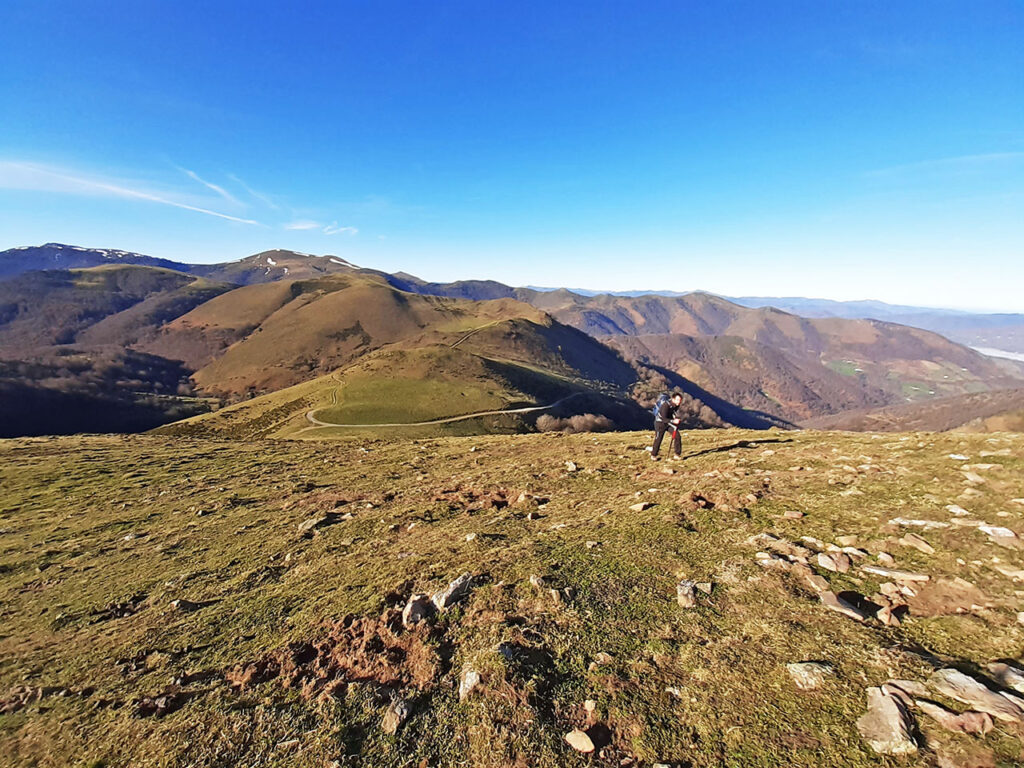
Following the wire fence, we descend to the pass of Buztanberro (1,169m), where we briefly coincide with the GR11 and definitively separate from the GR12, to then ascend to the summit of...
(3h00min; 9,7km) Artsal (1.230m).
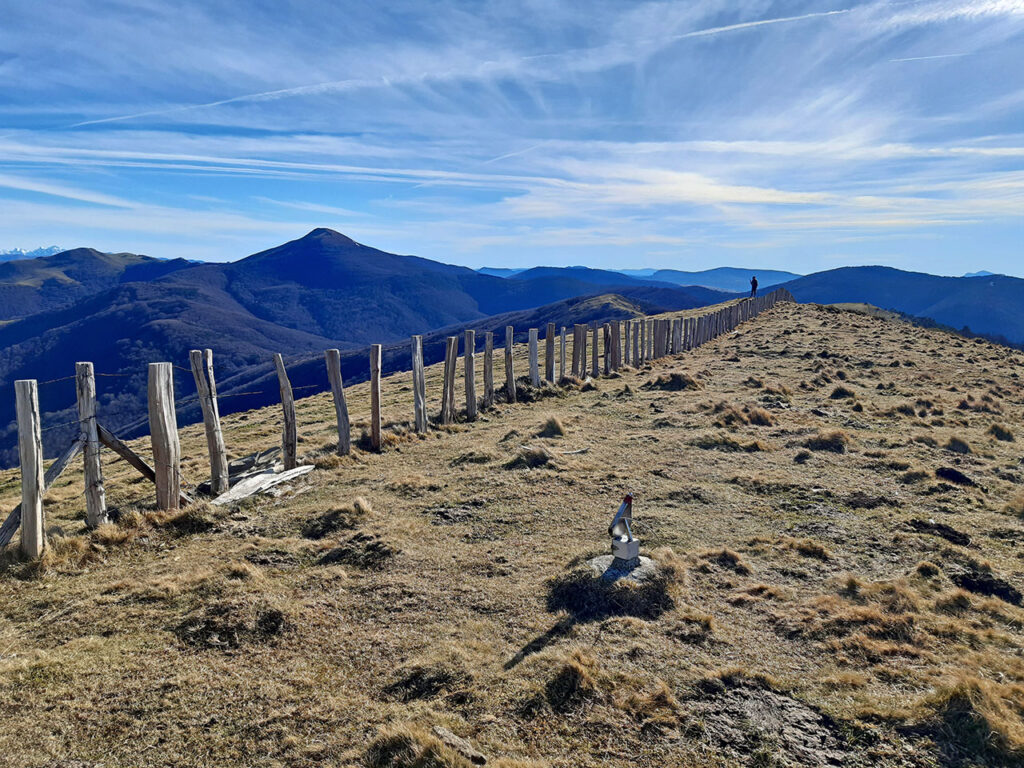
At this point we leave the main ridge (the Cantabrian-Mediterranean divide) to turn right (west) and go in search of our main objective for the day, the...
(3h20min; 10,6km) Okoro (1.259m), which we reach by following another wire fence.
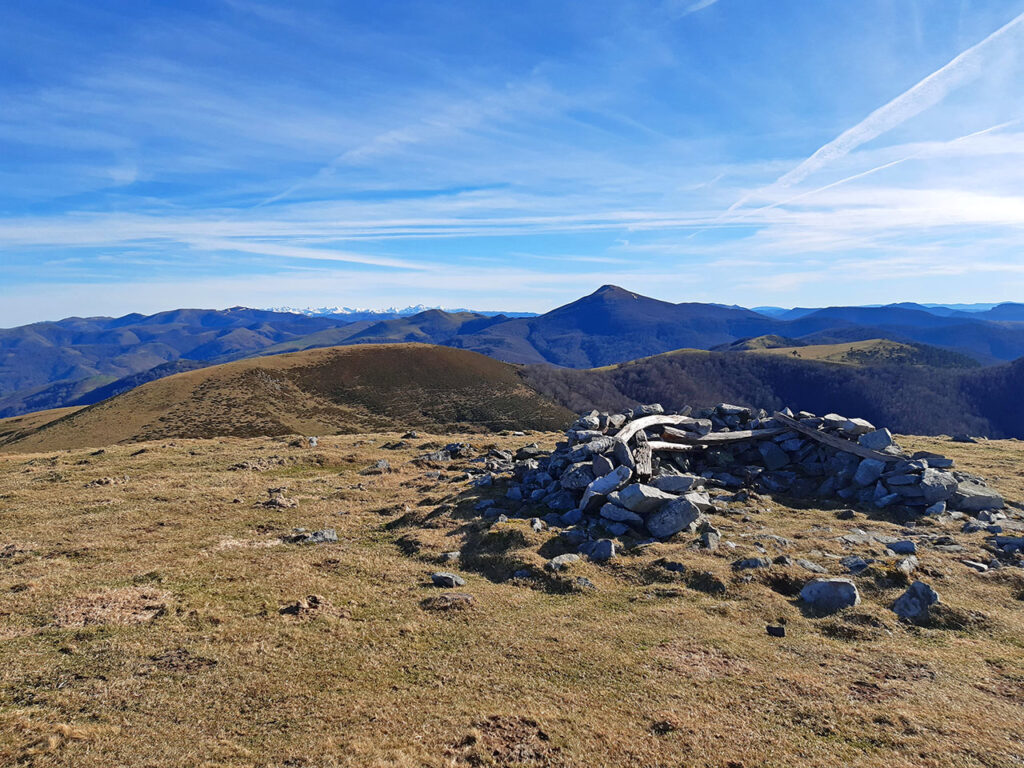
The descent from the Okoro to the track is the most difficult part of the route as there is no path and the main difficulty is jumping over a wire fence. From the summit, everyone can choose their own route. We have chosen to descend in a westerly direction following the wire fence until we reach an area next to a larch wood, where the forest opens up wide on the left hand side.
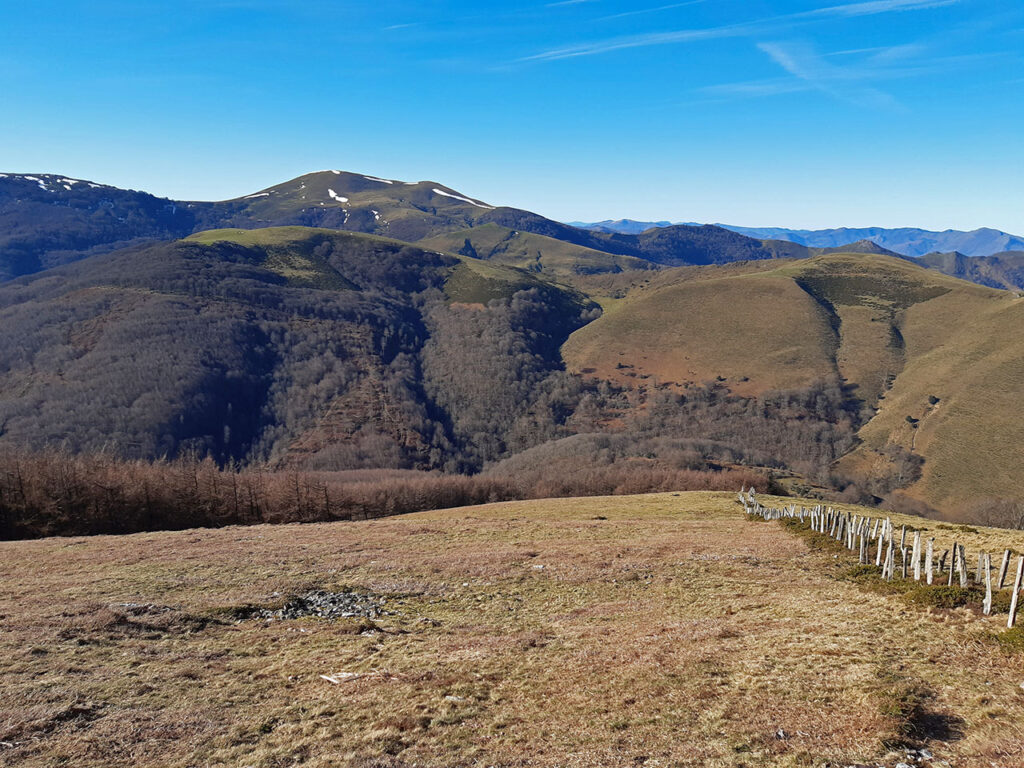
If you go there in winter, you should know that although these trees may appear to be dry, they have simply lost their leaves. The larch is the only European deciduous conifer. As we said, after passing the grove of larch trees, we have chosen to turn left to continue losing height and enter the beech forest, which we cross without any problems until we come across the fence. After walking unsuccessfully for a hundred metres along the fence in search of an easy place to pass, we ended up jumping over it, taking advantage of a reinforced post. Shortly afterwards, we come to a...
(3h40min; 11,4km) track (1.038m) We will return to the start of this route without getting lost.
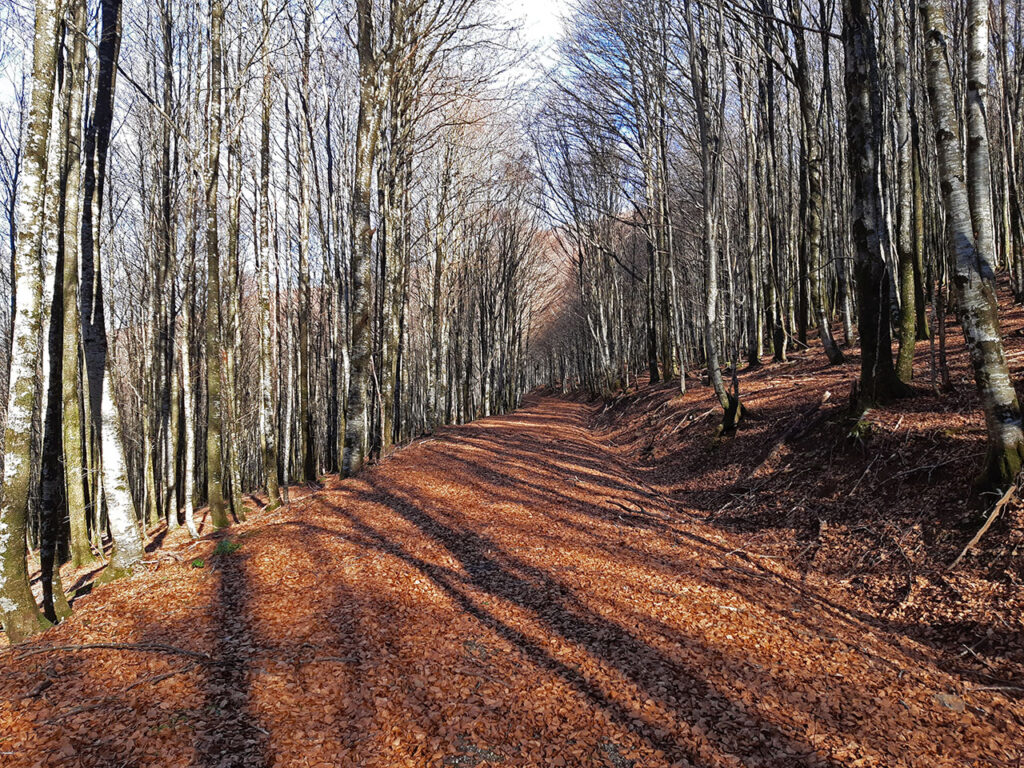
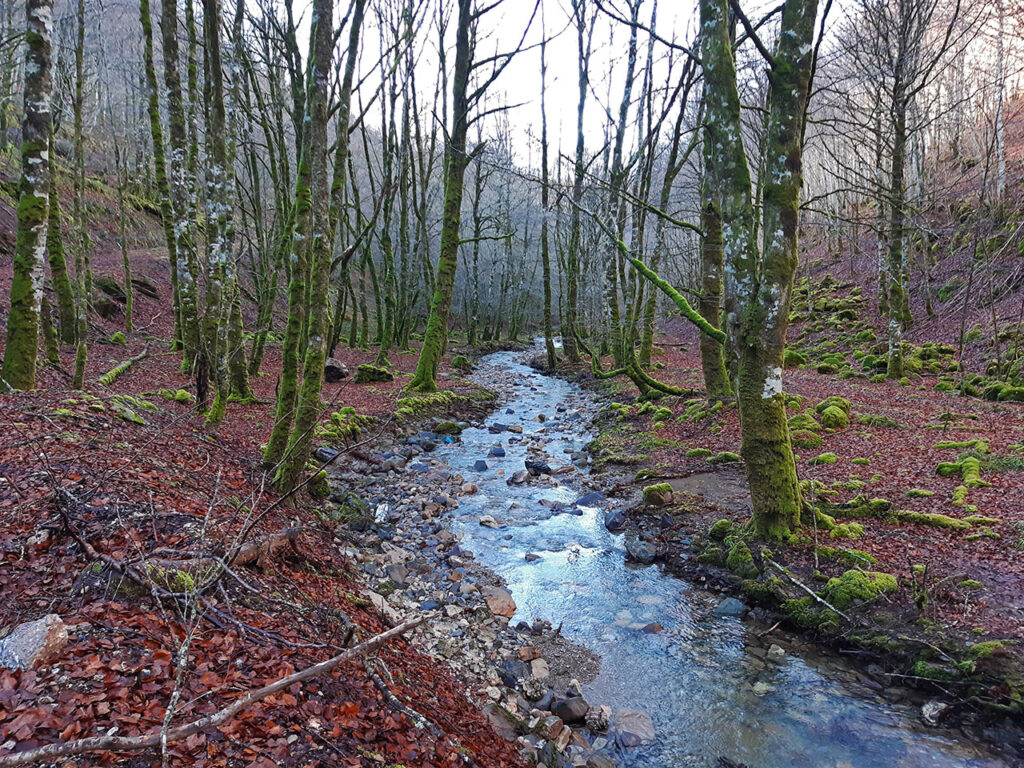
(4h35min; 15,7km) Artesiaga Road - Km18,7 (767m).
Nearby you may be interested in:
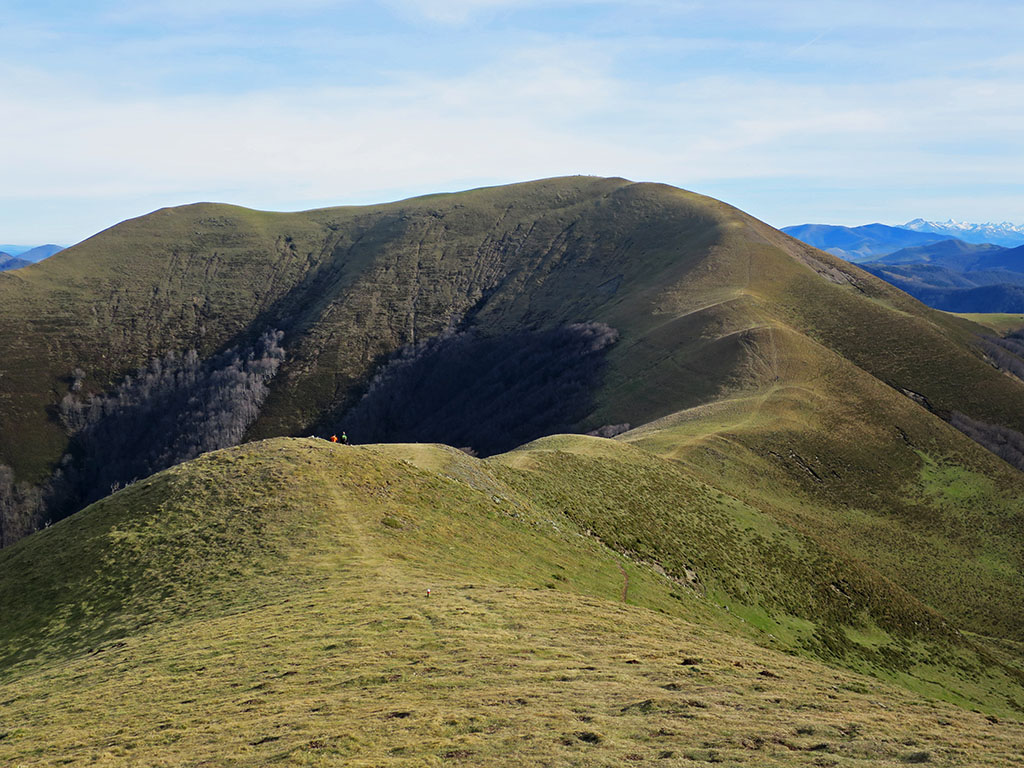
Circular route in which we will also climb Loiketa (1,138m), Algorrieta (1,160m), Okolin (1,360m), Zuriain (1,411m) and Iturrondo (1,340m) [5h45min; 20.4km; +/-1,200m] [5h45min; 20.4km; +/-1,200m].
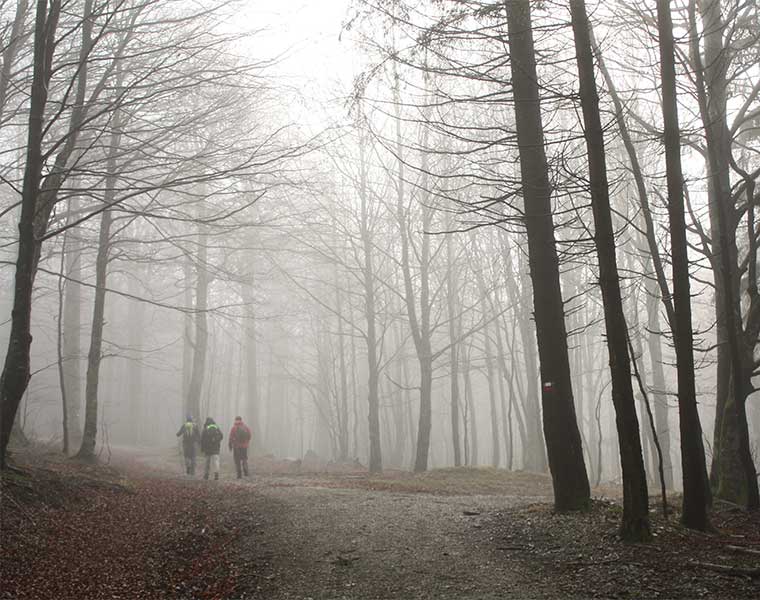
Route to and from the Adi, one of the main peaks in the mountains of Navarre.
Fastpacking is not about going faster. It's about going lighter.
If you come from classic trekking, this is the next step: learning to move with less weight,
more fluid and enjoying every kilometre more.
Join the channel and start discovering what lightness feels like.
